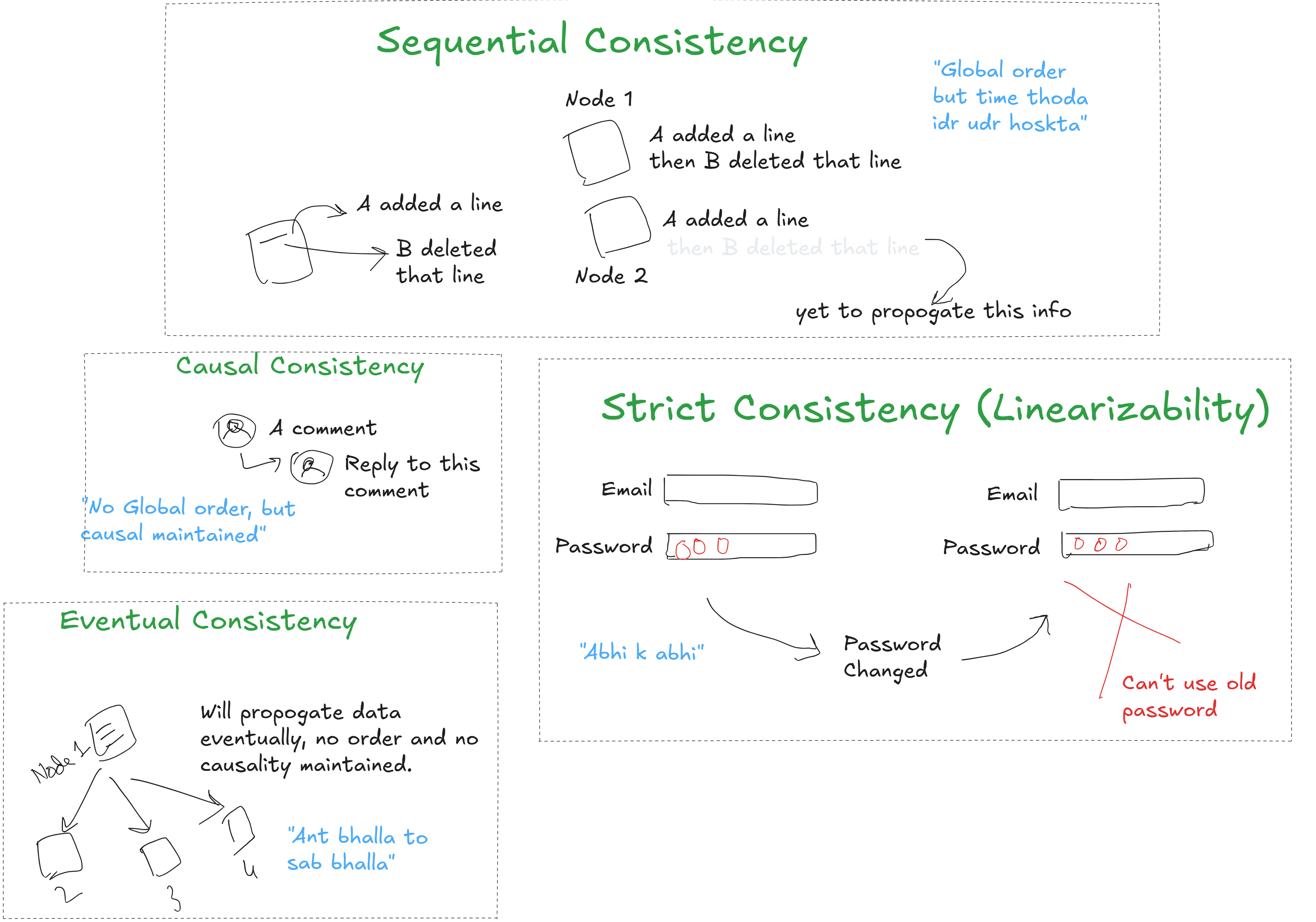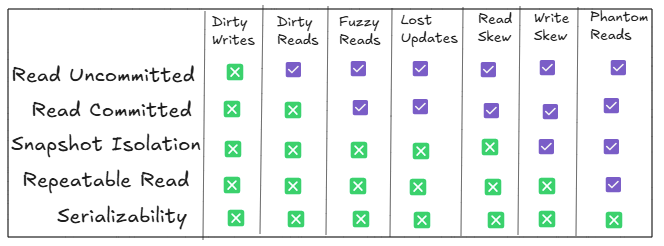Consistency & Concurrency Control
A distributed system must ensure that the following key properties hold even in the presence of failures.
- Atomicity - Either all operations of a transaction are executed or none. Difficult due to partial failures.
- Isolation - Concurrent transactions should not interfere with each other. Difficult due to concurrency issues.
- Consistency - The system must remain in a valid state after operations. Difficult due to network asynchrony.
Consistency Model
A theoretical model which determines how “in sync” everyone’s view of the data is.

| Consistency Model | Behavior | Example |
|---|---|---|
| Strict Consistency (Linearizability) | Every read sees the latest write. | Password changes – logging in with an old password should immediately fail. |
| Sequential Consistency | All processes see operations in some consistent, global order, even if that order differs from real-time. | All users see the same order of edits in a shared document, even if that order isn’t the exact moment each edit was made. |
| Causal Consistency | If A happened before B, all nodes see A before B. | If a person replies to comment, then another person replies., its order should be maintained. |
| Eventual Consistency | All replicas eventually converge to the same value but may temporarily return stale data. | Amazon DynamoDB, Cassandra – writes propagate eventually. |
Isolation Levels and Concurrency Anomalies
Concurrency can lead to anomalies.
Anomalies -
- Dirty Read : A transaction reads uncommitted changes from another transaction.
- Fuzzy Read : A value changes between two reads in the same transaction.
- Phantom Read : A transaction does a read and another transaction writes or removes a data item, so first transaction may be working on stale data.
- Lost Update : Two transactions update the same value without knowing about each other.
- Read Skew : A transaction sees inconsistent data across queries.
- Write Skew : Two transactions read shared data and update based on old values.
Isolation levels (ANSI SQL-92 standard) help prevent anomalies created by concurrency issues.
| Isolation Level | Guarantee |
|---|---|
| Serializability | 2 transactions, when executed concurrently, should give the same result as though executed sequentially. |
| Repeatable Read | Data read once in a transaction will not change. |
| Snapshot Isolation | All reads in a transaction see a consistent snapshot of the database. |
| Read Committed | Only committed data is visible to transactions. |
| Read Uncommitted | Transactions can read uncommitted data. |
Serializability prevents all these anomalies. Higher isolation levels reduce concurrency but improve correctness.
